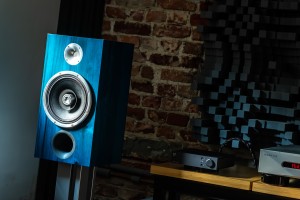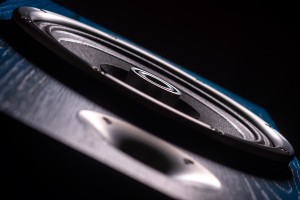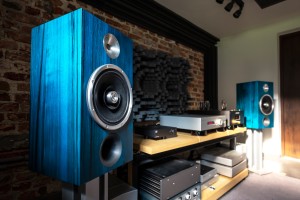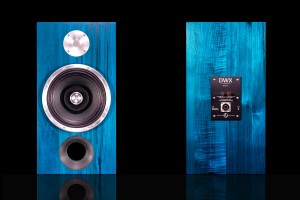Zu Audio is a US-based audio house known for high-efficiency speakers infused with its own full-range drivers and reasonable prices. Recently I got my chance to take the company’s latest product – Zu Audio DWX Supreme – under my scope. Enjoy!
The outsider
I’m sure that most seasoned audio enthusiasts can still remember their first serious speaker set. The odds are that these memories are fond and mine are. In 2012 I got myself a brand new pair of KEF LS50 monitors, designed to celebrate the English manufacturer’s 50th anniversary. Over a decade ago signature coaxial Uni-Q drivers, gloss black ply cabinets and magnesium/aluminium alloy front baffles screamed luxury and they still do today. First KEF LS50s were also priced to sell. Back then I saw this as their maker’s statement that a nice speaker set loaded with costly tech doesn’t have to cost an arm and leg. Around that time I already knew about many brands into very expensive such products. Roughly then my regular visits to 6moons.com also had started, which is where I’ve found out about Zu Audio.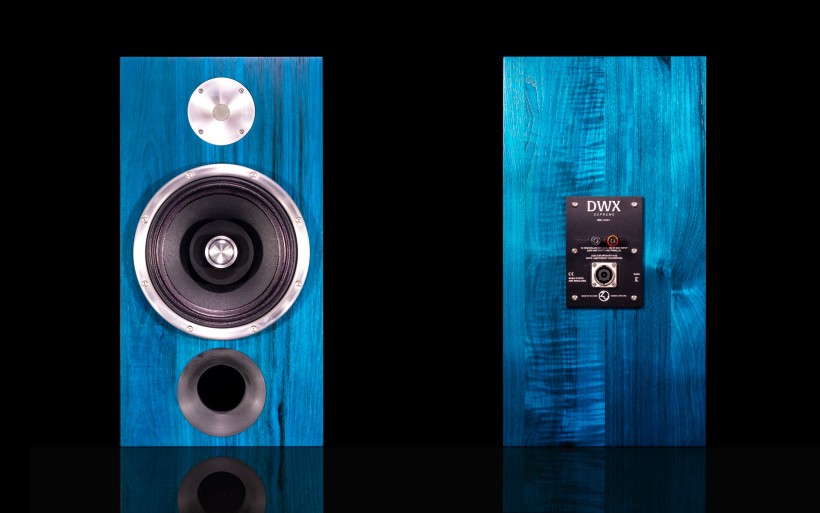 As a freshman to the stereo club I used to check sites of upscale audio houses, look at their really expensive stuff just next to a Steinway piano or exotic car and daydream that perhaps one day I’ll get to work on some of that. Today I know that handling i.e. a 150kg speaker set on my own isn’t exactly easy, so I don’t have such aspirations. This aside, the view at the Zu Audio site was no less professional yet radically different still; rather casual, simpler to understand and very appealing in the process. All this was in line with the company’s portfolio targeted at working folks rather than millionaires. One particular photo found there that stuck in my mind featured the company’s founder – Sean Casey – in the mountains among friends, freeride snowboarding I believe, camping and with one of his speaker sets on duty in there too. These people are my tribe, so unsurprisingly I’ve had my eye on their products ever since.
As a freshman to the stereo club I used to check sites of upscale audio houses, look at their really expensive stuff just next to a Steinway piano or exotic car and daydream that perhaps one day I’ll get to work on some of that. Today I know that handling i.e. a 150kg speaker set on my own isn’t exactly easy, so I don’t have such aspirations. This aside, the view at the Zu Audio site was no less professional yet radically different still; rather casual, simpler to understand and very appealing in the process. All this was in line with the company’s portfolio targeted at working folks rather than millionaires. One particular photo found there that stuck in my mind featured the company’s founder – Sean Casey – in the mountains among friends, freeride snowboarding I believe, camping and with one of his speaker sets on duty in there too. These people are my tribe, so unsurprisingly I’ve had my eye on their products ever since.
Fast forward to the Munich High End event in 2016, when I finally got the chance to listen to a Zu Audio speaker set. Those who don’t attend such shows should know that calm music genres and sane volume levels are the industry’s standard. Not all but most exhibitors stick to that. Upon entering the Zu room it was apparent that Sean and his team were in the minority that didn’t get the memo. Some people may consider rock music at high SPL a sacrilege in that environment. Sean, yours truly and about two dozens of other people had a blast, however. During a brief chat outside that room I’ve asked the man about his repertoire of choice and approach, both very unusual given the circumstances. He replied that they simply like to have fun. This was the first and only time I’ve heard something along those lines from a show exhibitor and I’ve met hundreds of them over the years. Now let’s jump to mid 2023 when the Zu Audio DWX Supreme review was published at 6moons.com. Since logistics within the EU are easy these days, the opportunity to guest the same loaner under my roof was on the table and I was in. Interestingly, Srajan’s and John Darko’s fantastic highly educational podcast about this product went live just several days after. I encourage everyone interested in this speaker set to have a listen. The cargo from Srajan comprised two large cardboards with as many foamy liners per box inside. These thick inserts sufficed to lock speakers into place and have them properly secured. I’ve found this utilitarian packaging very practical. Upon extracting the two key ingredients I had to detach hard plastic covers on their main drivers and that was it. Later on it turned out that ‘Remove to groove’ stickers on these frisbee-like plates were a spot on forecast of what to expect. Moving on, each Zu Audio DWX measures (W x D x H) 30.5 x 30.5 x 58.5cm and weighs 19kg. It’s fair to say that these are big suckers, but one adult will manage just fine. Further specs list 95dB (@2.8V, 1m) sensitivity, unusually high 12Ω nominal impedance, 38Hz – 22kHz typical in-room response, 118dB max. SPL and max. input of 200W. 95% US-made and life expectancy of 100 years seal the deal.
The cargo from Srajan comprised two large cardboards with as many foamy liners per box inside. These thick inserts sufficed to lock speakers into place and have them properly secured. I’ve found this utilitarian packaging very practical. Upon extracting the two key ingredients I had to detach hard plastic covers on their main drivers and that was it. Later on it turned out that ‘Remove to groove’ stickers on these frisbee-like plates were a spot on forecast of what to expect. Moving on, each Zu Audio DWX measures (W x D x H) 30.5 x 30.5 x 58.5cm and weighs 19kg. It’s fair to say that these are big suckers, but one adult will manage just fine. Further specs list 95dB (@2.8V, 1m) sensitivity, unusually high 12Ω nominal impedance, 38Hz – 22kHz typical in-room response, 118dB max. SPL and max. input of 200W. 95% US-made and life expectancy of 100 years seal the deal.
Zu Audio DWX fits the uber-monitor profile given its large stand-mount frame. Two drivers per box may imply a two-way design, but this isn’t it. The company’s very own Zu260FRD-ND 10” full-range transducer with a whizzer cone, paper membrane, stiff rippled cloth suspension and neutral-hung 2” voice coil on paper/Kapton former operates without a crossover and covers the entire audible range. This means that your amp will directly connect to that voice coil. Eminence ASD-1001 tweeter inside a short aluminium waveguide features a titanium dome and ferrite motor. It kicks in at 12kHz via a shallow high-pass filter comprised of just one capacitor. Most regular such drivers step in way sooner, but the one in the DWX acts like a super-tweeter that boosts ambience and makes finest shimmers on the very top more pronounced. The technical term Srajan had used for this speaker set is 1.5-way. I think that naming it an augmented full-ranger, or a purist widebander with a twist, is no crime either. Zu Audio DW6 is today’s slightly more expensive though as deep and wide floorstander version. Some may thus wonder why to even bother with its shorter kin in the first place. The obvious answer is that customers asked, so Sean provided. There’s more to that, though. Zu Audio DW6 incorporates a slotted bass port on its rear, so some distance between that opening and wall is a must. This review’s monitor set with a rather large bass-reflex bore on its front promises us performance even upon positioning it just next to a wall. Those who can’t have this product set up far away from that surface should find that a big plus. Today’s design also is Zu’s first that doesn’t feature the company’s usual bottom-firing Zu-Griewe loading and for a righteous reason. The DW6’s internal volume allows its 10-incher to go lower. In case of the DWX the same driver with less space at its disposal still has to perform as a full-fledged widebander without any assistance on the bottom. Bass-reflex venting was Sean’s way to make it work within a smaller cabinet. This driver has been around for about two decades, so to keep the company’s voicing profile and reasonable price it had to stay. Good. Big sound demands large cone surface.
Zu Audio DW6 is today’s slightly more expensive though as deep and wide floorstander version. Some may thus wonder why to even bother with its shorter kin in the first place. The obvious answer is that customers asked, so Sean provided. There’s more to that, though. Zu Audio DW6 incorporates a slotted bass port on its rear, so some distance between that opening and wall is a must. This review’s monitor set with a rather large bass-reflex bore on its front promises us performance even upon positioning it just next to a wall. Those who can’t have this product set up far away from that surface should find that a big plus. Today’s design also is Zu’s first that doesn’t feature the company’s usual bottom-firing Zu-Griewe loading and for a righteous reason. The DW6’s internal volume allows its 10-incher to go lower. In case of the DWX the same driver with less space at its disposal still has to perform as a full-fledged widebander without any assistance on the bottom. Bass-reflex venting was Sean’s way to make it work within a smaller cabinet. This driver has been around for about two decades, so to keep the company’s voicing profile and reasonable price it had to stay. Good. Big sound demands large cone surface.
Zu Audio DWX is the manufacturer’s most affordable speaker set available from $1’398/pr. This price gets you the base satin black version that undergoes 100hrs of factory burn-in (50%/50% moderate/extreme intensity playback on full-bandwidth hard hitting music with the final QC afterwards) and features Mission hookup wiring. Metallic black satin and black Hickory add $140 to the bill, rustic Hickory is $200 extra. Electric blue/ruby red Hickory and teal finishes are $300 and Walnut is $360. If you have your own color of choice in mind, Zu can probably make it. The DWX can also have one of the two available performance packages applied; Superfly (+$399) and Supreme (+$699). The former includes Mission MkII wiring, ClarityCap MR capacitors for tweeters, tighter driver matching and doubled factory burn-in time (200hrs). The latter pack extends burn in to 300 hours, ups the ante on driver tolerances and adds Jupiter Copper caps and Zu Event hookup wiring. Both upper-echelon versions also get ZuB3 terminals on Neutrik’s speakON sockets just underneath regular posts. In Srajan’s review Sean explained that these two upgrade tiers primarily get us more resolution and higher insight into a recording quality. Knowing that burn in is a thing, caps change sound and crossoverless full-range speakers respond very well i.e. to cables, I have no reasons to think that this doesn’t hold true. Zu Audio DWX in its dearest Supreme form dressed in Walnut demands $2’457. EU clients should add rougly 30% extra to cover Import/shipping cost, so about $3’200 is the sum total. I’ll say as early as now that it’s not a lot for what one gets in return. The DWX Supreme version Srajan had forwarded my way turned out a finely assembled honest product packed with means rarely seen in its price range. Phase plugs, waveguides, outer full-range rings and nameplates on the rear are all machined aluminium parts. Enclosures are no MDF but composite wood. Silver bits on the front can be anodized in black at no extra cost. The product is in 95% made in the US and all three its versions are externally alike. Visual modesty and wood grain visible under my loaner’s teal skin is pretty by my standards, the DWX’s large footprint be damned. Its price is attractive, but that’s not the best part. The unusual topology of this product implies a unique high-RPM sonic aesthetic that’s radically different from sound most other speaker sets out there make.
Zu Audio DWX in its dearest Supreme form dressed in Walnut demands $2’457. EU clients should add rougly 30% extra to cover Import/shipping cost, so about $3’200 is the sum total. I’ll say as early as now that it’s not a lot for what one gets in return. The DWX Supreme version Srajan had forwarded my way turned out a finely assembled honest product packed with means rarely seen in its price range. Phase plugs, waveguides, outer full-range rings and nameplates on the rear are all machined aluminium parts. Enclosures are no MDF but composite wood. Silver bits on the front can be anodized in black at no extra cost. The product is in 95% made in the US and all three its versions are externally alike. Visual modesty and wood grain visible under my loaner’s teal skin is pretty by my standards, the DWX’s large footprint be damned. Its price is attractive, but that’s not the best part. The unusual topology of this product implies a unique high-RPM sonic aesthetic that’s radically different from sound most other speaker sets out there make.
Finding just the spot for the DWX in my room was the first order of business. Its point-source radiation and vents on the front were good indicators where to start. The latter design choice makes the Zu a highly domesticated subject with minimal spacing demands. Put it as close to the wall as its rear terminals allow and it’ll happily manage without having its bass output crippled, which is good news for listeners whose limited floor space and/or room décor necessitate such positioning. To simplify, the DWX will behave well in places where most regular loudspeakers won’t. Alas, imaging depth grows along with increasing the distance between a speaker set and front wall. That said, I’m particularly fond of those capable of locking me inside an aural sphere, wherein I can enjoy the view spatially surrounding, complex and touchable rather than uniformly flat, distant and nowhere near as immersive and exciting. The sensation of music presented in this way is comparable to experiencing a live gig from the first row. Well-developed spatial depth is critical to get there. sound|kaos Vox 3afw monitors are quite fiendish in this regard, so I’ve gotten a bit spoiled. Aggressively toed in and distanced at two arms’ lengths away from the listening chair, these petites sit nearly in the middle of my 23m2 listening room. It’s a fair price to pay considering all the benefits. The question was whether the DWX could compete if positioned like so. But of course. On the contrary to many regular speaker sets, those infused with crossoverless wideband drivers don’t suffer from phase shifts, timing issues and associated blur. This on top of being a point source performer makes the Zu excellent on all spatial tasks and then some. Imaging precision, articulation, directness, clarity, quickness, immediacy and ability to render vocals as fetching intimate sound sources form the core care package the full-range breed is known for. In my roster this product group is second to none here. No regular two- or three-way design I’m aware of comes any close. To have these virtues emphasized this tastefully, a speaker set really has to belong to the family and the DWX clearly does. Its sonic gearing not only promotes listed traits, but it also makes this model a terrific nearfield trooper to boot, even though its large frame may suggest otherwise and its application as described may seem counter-productive. It’s not. When positioned roughly where sound|kaos Vox monitors usually stand, the DWX proved a highly immersive type capable of similar aural trickery. Although not quite as gifted on that score as the Swiss, it still played roughly in these leagues, which was expected given its wideband pedigree. That’s exactly what happens when just one unfiltered transducer is in charge of pretty much everything. Lots of space around its box further boosts the effect by keeping in-room reflections at bay. Yes, I’m fully aware that a big monitor used in a headphone-like setup is a sight many would find puzzling if not plainly unpractical. My ears simply beg to differ.
But of course. On the contrary to many regular speaker sets, those infused with crossoverless wideband drivers don’t suffer from phase shifts, timing issues and associated blur. This on top of being a point source performer makes the Zu excellent on all spatial tasks and then some. Imaging precision, articulation, directness, clarity, quickness, immediacy and ability to render vocals as fetching intimate sound sources form the core care package the full-range breed is known for. In my roster this product group is second to none here. No regular two- or three-way design I’m aware of comes any close. To have these virtues emphasized this tastefully, a speaker set really has to belong to the family and the DWX clearly does. Its sonic gearing not only promotes listed traits, but it also makes this model a terrific nearfield trooper to boot, even though its large frame may suggest otherwise and its application as described may seem counter-productive. It’s not. When positioned roughly where sound|kaos Vox monitors usually stand, the DWX proved a highly immersive type capable of similar aural trickery. Although not quite as gifted on that score as the Swiss, it still played roughly in these leagues, which was expected given its wideband pedigree. That’s exactly what happens when just one unfiltered transducer is in charge of pretty much everything. Lots of space around its box further boosts the effect by keeping in-room reflections at bay. Yes, I’m fully aware that a big monitor used in a headphone-like setup is a sight many would find puzzling if not plainly unpractical. My ears simply beg to differ.
It was apparent from the get-go that the Zu was no Harbeth or Spendor type. Considering what kind of a speaker set this is, I can’t say that its ace nearfield performance came as a shock. Something else did, however. This one particular specialty turned out a real banger that I hadn’t seen coming. It also set the DWX apart from the über monitor lot as much as its own wideband kind. Prior to revealing what that was, let me get back to positioning. I think that monitors this large really ought to sit atop something shorter and as wide as their base to look any good. Soundstyle Z1 speaker stands at my disposal were the exact opposite of that, so the view was far from fancy. More importantly, neither these tall skinny steel pillars nor Ikea Poäng chair I’ve been using for years are height-adjustable. That was the reason why the DWX with its tweeters above widebanders produced imaging baseline a bit higher than I’m used to. Shortening the distance between both teal speakers and front wall would alleviate this to a degree, but that could be done at any point. Besides, I wasn’t yet ready for sacrificing imaging depth. Since the Zu can be flipped upside down without changing the positioning of its key transducers, it was worth a shot. The reversed product worked great. More air and soundstage roughly in line with what I’m used to were all positive changes. Considering my stands’ height I thought that this setup was as good as it gets, so I was about to proceed with critical listens. Then I had one of those ‘shit, wait a second!’ moments. Vertically flipped or not, the DWX has its main transducers at the same height regardless. Position it horizontally a’la pro-studio style and these large drivers will sit about 15cm lower, which is what I did without any firm expectations. This one change turned out wholly positive and meaningful in my room. The entire landscape no longer felt suspended higher than it should be. Now the key sound sources visible there occupied spaces I’m accustomed to. All mandatory tracks on my playlist were spatially familiar and music felt more anchored in general. Since horizontal flippancy of the DWX was also allowed, I had to decide whether I wanted its bass ports inside and tweeters out or vice versa. In the former scenario backdrop for instruments and vocals was a bit wider and more surrounding. The alternate option with vents on the outside resulted in a mildly reinforced midbass presence, most likely due to their shorter distance to boundary walls of my room. The DWX was plenty rich there already, so the former horizontal positioning was my choice. A gentle toe in sufficed to lock virtual shapes into place and land nicely focused imaging, which also is typical for full-range speakers. The distance between each Zu box and front/rear walls in my listening space was 120/85cm respectively and all was good. Although getting up to this point may read like a hassle, it wasn’t. Rather, during this fun adventure the DWX introduced itself as more adaptive and easier to work with than most other speakers I’ve auditioned. Used in horizontal or vertical plane, near field, just next to the front wall or somewhere in-between… it just didn’t care. I’ve found that very useful and many listeners will too.
Vertically flipped or not, the DWX has its main transducers at the same height regardless. Position it horizontally a’la pro-studio style and these large drivers will sit about 15cm lower, which is what I did without any firm expectations. This one change turned out wholly positive and meaningful in my room. The entire landscape no longer felt suspended higher than it should be. Now the key sound sources visible there occupied spaces I’m accustomed to. All mandatory tracks on my playlist were spatially familiar and music felt more anchored in general. Since horizontal flippancy of the DWX was also allowed, I had to decide whether I wanted its bass ports inside and tweeters out or vice versa. In the former scenario backdrop for instruments and vocals was a bit wider and more surrounding. The alternate option with vents on the outside resulted in a mildly reinforced midbass presence, most likely due to their shorter distance to boundary walls of my room. The DWX was plenty rich there already, so the former horizontal positioning was my choice. A gentle toe in sufficed to lock virtual shapes into place and land nicely focused imaging, which also is typical for full-range speakers. The distance between each Zu box and front/rear walls in my listening space was 120/85cm respectively and all was good. Although getting up to this point may read like a hassle, it wasn’t. Rather, during this fun adventure the DWX introduced itself as more adaptive and easier to work with than most other speakers I’ve auditioned. Used in horizontal or vertical plane, near field, just next to the front wall or somewhere in-between… it just didn’t care. I’ve found that very useful and many listeners will too.
With positioning sorted I could move to mapping the best hardware for today’s job. This arsenal comprised of Firstwatt F7/Thöress DFP and Trilogy 995R/915R combos plus Enleum AMP-23R integrated. The DWX is a very easy load, so its high compliance with all these amps was in the cards. The Enleum’s tiny footprint and retail price significantly below the other two setups marked it a particularly appealing first candidate. When I see large monitors, I subconsciously think about big beefy round sound. The Zu wasn’t it. During normal listening levels, say 75dB or so, it brimmed with easy details, was radiant, nuanced, contoured and also lean. The Enleum’s volume at about 10 o’clock still had plenty of headroom left to play with. Although upon going louder music grew more muscular, sunnier and spatially even more expansive, quick low hits i.e. on Hecq’s “Steeltongued” remained quite innocent. Here it should be said that wideband speakers show really well what kind of an amp feeds them with signal, so at that point I thought that perhaps this was it. The Enleum’s aesthetic is inherently informative, organic, texturally fruity, quick and just a touch warm. It most certainly isn’t a thick syrupy densely voiced device. The Zu simply communicated this and its mastery on delicate and vocal music. The level of textural charm, nuances, sensuality, moisture and overall sophistication I’d heard i.e. on Caetano Veloso’s “Come As You Are” was admirably high. Then again, on that score I also didn’t expect anything less from a full-range speaker set. After all, they’re artful posh types at their core. The DWX makes that point very well. Since the DWX handled calm minimalist tracks very well, early on I considered it as primed mainly for that. Large paper cones on barely moving upper suspensions propagate lots of air, however. The stiffness of these surrounds, high efficiency, easy impedance and lack of crossover networks also make that movement very fast and controlled, which translates into high directness, immediacy, elasticity, effortlessness and open-baffle like spatially liberated aesthetic beyond reach of the full-range kind. Let me stress that most such products are rear horn-loaded delicate specimens not tailored for slams and loud playback. The DWX very much is. It’s a finessed wideband charmer as much as roaring dynamically talented wildling, so quite the outsider and very special at that.
Since the DWX handled calm minimalist tracks very well, early on I considered it as primed mainly for that. Large paper cones on barely moving upper suspensions propagate lots of air, however. The stiffness of these surrounds, high efficiency, easy impedance and lack of crossover networks also make that movement very fast and controlled, which translates into high directness, immediacy, elasticity, effortlessness and open-baffle like spatially liberated aesthetic beyond reach of the full-range kind. Let me stress that most such products are rear horn-loaded delicate specimens not tailored for slams and loud playback. The DWX very much is. It’s a finessed wideband charmer as much as roaring dynamically talented wildling, so quite the outsider and very special at that.
Although on synth rapid fare the Vox dug noticeably deeper than the DWX, its bass optically still felt smaller. Both are ported affairs, but the latter doesn’t sound like one. Its snappy impactful contoured demeanor and ability to effortlessly pump more air towards a listener prevent that. By changing repertoire and hardware I intended to finally take this behavior under a scope. Team Firstwatt F7/Thöress DFP replaced the AMP-23R and heavy music was served. Things escalated very quickly from there. The Firstwatt was designed to act like a more powerful and authoritative amplifier than its specs would suggest, while the tube-infused DFP preamp packs tonal richness, density and warmth atop closely served sound sources, hard hits, high dynamics and outstanding agility. To map the baseline I cued up “Feel Good Hit of the Summer” by Queens of the Stone Age. In this setup the Zu no longer felt lean or innocent in any way. Quite the contrary, as if it were happy to finally let Mr. Hyde out and effectively have me pinned to the seat with a big grin on my face. I didn’t expect that and I’m sure that most listeners not previously exposed to Zu Audio products wouldn’t either. Short finely timed precise drum jabs followed hefty well-anchored introductory guitars on that track. All this tasty exciting rawness and anger didn’t stop Joshua Homme’s voice from being as substantial as it was finely outlined and perfectly readable. The entire view was spatially massive, highly intense, packed with color and substance, dynamically broad and damn enjoyable. The audiophile lingo would recognize that as stout upper bass and elevated midrange presence with properly developed top end, but fun was the key word. I couldn’t recall when was the last time I had this much of it during listening to that specific song. A different story was with Therion’s “Never Again”. Although the entire album’s mixing is average at best, I was certain that I’ve never heard this track any better.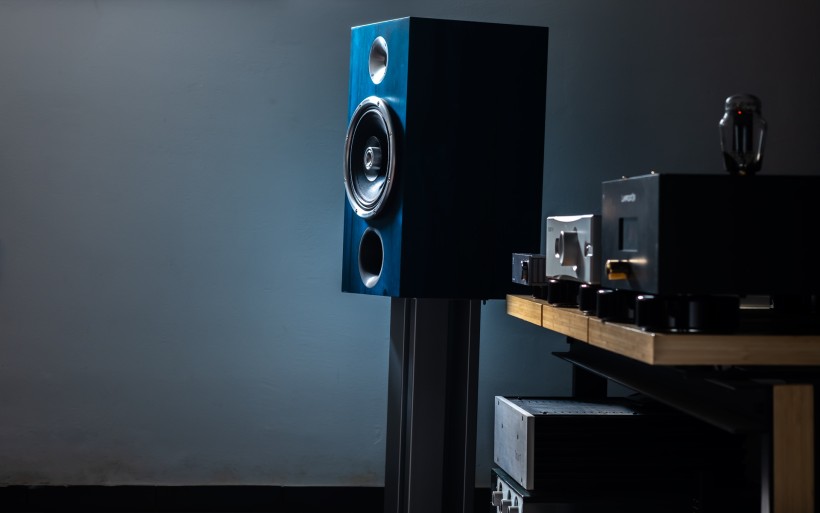 The Zu’s wideband flavor mixed with fully ripe tone, density, dynamic prowess and quickness secured an outstanding outcome. Informative, articulated, precise and punctual, this speaker set was also free from any blur, spatial confusion, wooliness, hollowness or any other lag. Considering this, well, it mattered not that neither it went as low as the Vox nor was as strikingly intimate. As far as heavy music goes, the Swiss couldn’t compete on aural effortlessness, substance, sheer rawness and ease. The Zu’s silly good performance on this specific count is the above-mentioned banger trait and its greatest asset in my opinion. I’m also not aware of any other similarly sized or even larger purist full-ranger that would have it. To simplify, the DWX fares brilliantly on music most other wideband products aren’t equipped to do at all. Although it clearly thrives on heavy challenges and frankly speaking has what it takes to shock here, it’s a master artist on unamplified instrumental jobs too. On Rodrigo Y Gabriela’s “Orion” it brilliantly showcased how much energy acoustic guitars had in store and how quick, substantial and crisp they were upon releasing it, just to return to mellowness and elegance shortly after. Dullness, sharpness or fatigue of any kind weren’t invited.
The Zu’s wideband flavor mixed with fully ripe tone, density, dynamic prowess and quickness secured an outstanding outcome. Informative, articulated, precise and punctual, this speaker set was also free from any blur, spatial confusion, wooliness, hollowness or any other lag. Considering this, well, it mattered not that neither it went as low as the Vox nor was as strikingly intimate. As far as heavy music goes, the Swiss couldn’t compete on aural effortlessness, substance, sheer rawness and ease. The Zu’s silly good performance on this specific count is the above-mentioned banger trait and its greatest asset in my opinion. I’m also not aware of any other similarly sized or even larger purist full-ranger that would have it. To simplify, the DWX fares brilliantly on music most other wideband products aren’t equipped to do at all. Although it clearly thrives on heavy challenges and frankly speaking has what it takes to shock here, it’s a master artist on unamplified instrumental jobs too. On Rodrigo Y Gabriela’s “Orion” it brilliantly showcased how much energy acoustic guitars had in store and how quick, substantial and crisp they were upon releasing it, just to return to mellowness and elegance shortly after. Dullness, sharpness or fatigue of any kind weren’t invited.
Srajan informed me that the Zu can take high power with dignity, so I had to try that as the last thing on the to-do list. Trilogy 995R/915R set that had replaced the Firstwatt F7/Thöress DFP combo packed 100wpc into 8Ω to land yet another unexpected change. Now sound in my room was more grounded, illuminated, open, controlling, spatially deeper and bolder. These were all pure gains with no questions asked. The sensation was as if the DWX’s paper membranes grew in size to push even more air than before. Although this speaker set didn’t need high power, it clearly liked it. It was either this, or a higher current provision from more output devices in my monos versus those inside the Firstwatt and Enleum. Upon using 995R towers as 55wpc class A devices the meta drifted from authority and sun towards density and heft. The DWX enjoyed both power envelopes, but the former more visceral option was my private favorite. At that point I had no intention of returning to the other two amps. I was as happy as a heavy music enthusiast can be. Besides, three Carbide Audio Diamond isolators under each Sound Style Z1 stand injected the extra body and backdrop blackness without tempering the Zu’s bite, snap, ease of delivery, vitality and overall badassery. And lastly, in my setup this speaker set pulled stunts beyond reach of many far pricier arrivals I’ve guested in the past. This I think is a very good reason to file it as a specimen of terrific value. Let’s wrap.
Although at first glance Zu Audio DWX may look like yet another oversized monitor set, a high-tiered performer voiced unlike anything else I’ve sampled roughly in that size is all I see now. I’m simply not aware of any other stand mount product that also blends the usual full-range aroma and expressiveness with rock star attitude and willingness to party this hard. Today’s refreshingly different teal crowd-pleaser runs on machined parts and boutique homebrewed drivers. It’s finely put together, visually modest, unfussy about positioning and a breeze for amps to drive. I honestly can’t fault it for anything really, not even its large footprint. Shoppers into low synth beats may want to look elsewhere, but if your listening room is far from ideal and instrumental, vocal and heavy genres form your music diet, Zu Audio DWX is the answer. Considering its origin, build quality, posh pedigree and performance, it’s also worth every dime. Color me very impressed!
Associated Equipment:
- Amplifier: Trilogy 995R, FirstWatt F7, Enleum AMP-23R
- DAC: LampizatOr Pacific (KR Audio T-100 / Living Voice 300B + KR Audio 5U4G Ltd. Ed.)
- Speakers: Boenicke Audio W11 SE+, sound|kaos Vox 3afw
- Transport: Innuos Statement, fidata HFAS1-S10U
- Preamplifier: Trilogy 915R, Thöress DFP
- Speaker cables: Boenicke Audio S3, LessLoss C-MARC
- Headphones: HifiMan Susvara
- Speaker signal conditioning: LessLoss Firewall for Loudspeakers, Boenicke ComDev
- Anti-vibration conditioning: 12x Carbide Audio Carbide Bases (under DAC, preamp and speakers)
- Interconnects: LessLoss Entropic Process C-MARC, Boenicke Audio IC3 CG
- Power components: Gigawatt PC-3 SE EVO+/LC-3 EVO, LessLoss C-MARC, LessLoss Entropic Process C-MARC, Boenicke Audio Power Gate, ISOL-8 Prometheus
- USB components: iFi audio Mercury3.0
- Rack: Franc Audio Accesories Wood Block Rack 1+3
- Network: Fidelizer EtherStream, Linksys WRT160N
- Music: NativeDSD
Retail prices of reviewed components in EU (excl. VAT):
- Zu Audio DWX (satin black): $1’398/pr
- Zu Audio DWX Superfly (satin black): $1’797/pr
- Zu Audio DWX Supreme (satin black): $2’097/pr
- Black metallic satin/black Hickory: $140
- Rustic Hickory: $200
- Electric blue Hickory/ruby red Hickory/Teal: $300
- Walnut: $360
Manufacturer: Zu Audio









